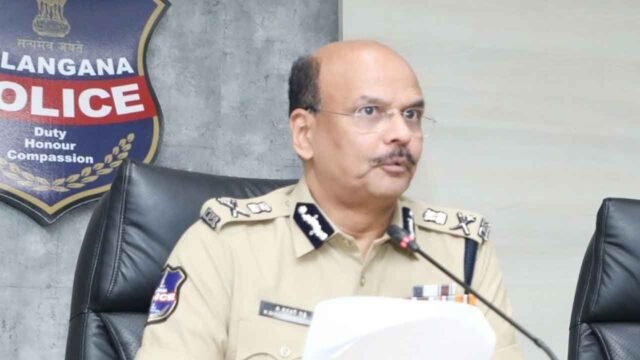Hyderabad: Hyderabad is in the running for the dubious distinction of being the most traffic-congested city after Bangalore, while the number of road fatalities in the State was over 7,200. Officials are sounding alarms over this distressing development, including the Director General of Police (DGP) B. Shivadhar Reddy.
At a recent high-level meeting, he noted, “We lose nearly 8,000 citizens a year to road accidents, far more than the 900 murders we investigate annually.”
He urged the top department officers to spring into action and underscored how traffic deaths surpass almost all other violent crimes in the state. The meeting that prioritised road safety stressed the need for a radical shift towards technology-driven policing, in terms of traffic and road accidents.
According to the latest available figures from the Telangana Transport Department, 7,760 people died in road accidents across the state in 2023, while preliminary data for 2024 points to at least 7,281 fatalities, making these some of the deadliest years on record for Telangana. The DGP emphasized these statistics to highlight the indescribable cost of inaction and Hyderabad figuring as an accident hotspot in NCRB findings.
India’s battle with road carnage is relentless, as the government records show that over 1.50 lakh people die annually in accidents nationwide, with Uttar Pradesh, Maharashtra and Tamil Nadu consistently leading the chart.
The Union Ministry of Road Transport & Highways (MoRTH) has repeatedly flagged Hyderabad as one of the fastest-growing cities in terms of vehicular traffic volume, which compounds enforcement and healthcare challenges.
Hyderabad Commissioner of Police V. C. Sajjanar, who recently likened drunk drivers to terrorists, reaffirmed that traffic management and citizen safety remain top priorities under the city’s evolving ‘people’s policing’ model.
“Smart enforcement, public partnerships, and technology are central to our agenda. Saving lives starts with all of us, not just the police personnel on the field,” he said.
This model encourages citizens to participate in civic safety and road discipline, aiming to reduce chaos and fatality rates across the urban sprawl.
Adapting an aggressive use of AI-driven surveillance for traffic violations and black-spot identification might make the job easier. Civic campaigns and strict penalties, specifically targeting helmetless, seatbelt-less, and drunken driving, can also play a role. Collaboration among traffic police, urban planners and the public, with a focus on promoting civic sense, will enhance road safety, he suggested.






